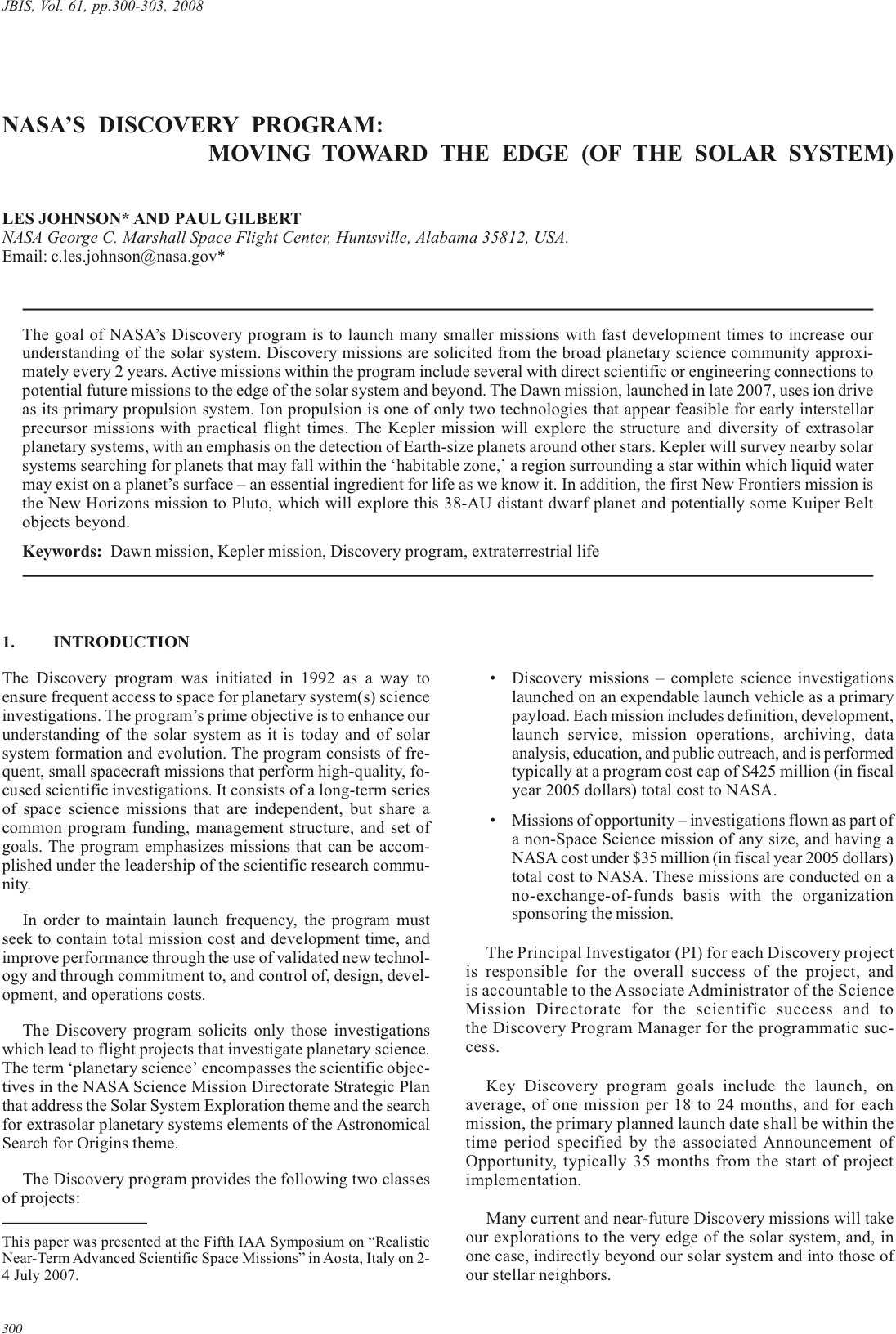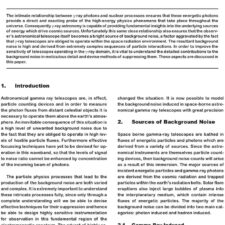NASAs Discovery Program: Moving Toward the Edge (of the Outer Solar System)
£5.00
L. Johnson; P. Gilbert (2008), JBIS, 61, 300-303
Refcode: 2008.61.300
Keywords: Dawn mission, Kepler mission, Discovery program, extraterrestrial life
Abstract:
The goal of NASA’s Discovery program is to launch many smaller missions with fast development times to increase our understanding of the solar system. Discovery missions are solicited from the broad planetary science community approximately every 2 years. Active missions within the program include several with direct scientific or engineering connections to potential future missions to the edge of the solar system and beyond. The Dawn mission, launched in late 2007, uses ion drive as its primary propulsion system. Ion propulsion is one of only two technologies that appear feasible for early interstellar precursor missions with practical flight times. The Kepler mission will explore the structure and diversity of extrasolar planetary systems, with an emphasis on the detection of Earth-size planets around other stars. Kepler will survey nearby solar systems searching for planets that may fall within the `habitable zone,’ a region surrounding a star within which liquid water may exist on a planet’s surface – an essential ingredient for life as we know it. In addition, the first New Frontiers mission is the New Horizons mission to Pluto, which will explore this 38-AU distant dwarf planet and potentially some Kuiper Belt objects beyond.





